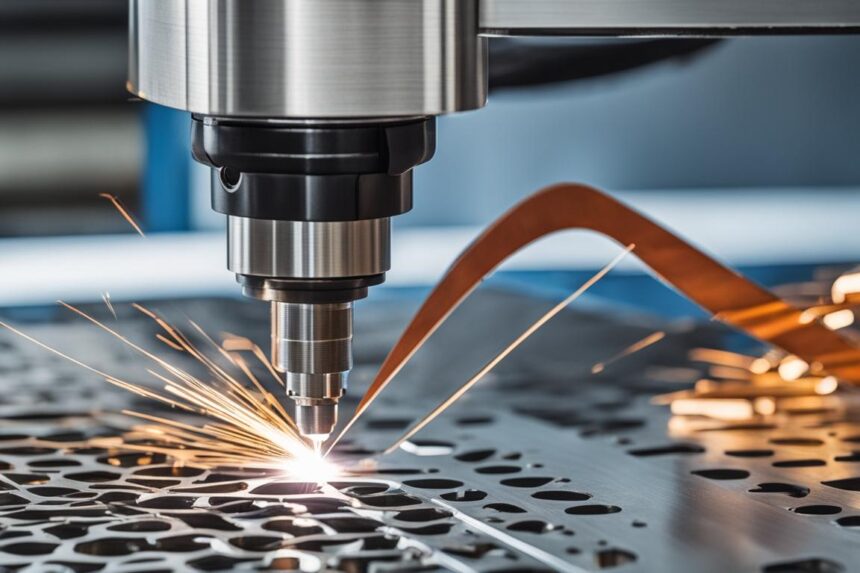In today’s fast-paced manufacturing landscape, speed and precision are no longer optional — they are essential. Customers expect shorter lead times, tighter tolerances, and consistent quality, all while keeping costs competitive. Among the many innovations that have transformed production processes, laser cutting has emerged as a standout technology that combines accuracy, versatility, and efficiency.
From intricate prototypes to high-volume production runs, laser cutting has become a go-to solution for industries ranging from automotive to architecture. Let’s explore what makes it so effective, why it’s replacing traditional methods in many applications, and how businesses can get the most from this advanced fabrication technique.
What Is Laser Cutting?
Laser cutting is a non-contact process that uses a highly focused beam of light to cut through materials with exceptional accuracy. The beam melts, burns, or vaporises the material along a programmed path, creating clean edges without the need for extensive post-processing.
Modern fibre laser machines can cut metals like stainless steel, mild steel, and aluminium with ease, but they’re also capable of working with plastics, wood, and composite materials. This flexibility has made the technology a mainstay in both industrial and creative applications.
Key Advantages of Laser Cutting
1. Precision and Accuracy
The beam of a laser cutter can be as small as a fraction of a millimetre, enabling incredibly detailed designs and tight tolerances. This makes it ideal for producing components that need to fit perfectly in larger assemblies, where even slight deviations can cause costly delays.
2. Speed
Laser cutting is faster than many traditional cutting methods, especially for thin to medium-gauge materials. Combined with automated loading systems and CNC programming, it can dramatically reduce turnaround times from design to finished part.
3. Versatility
One of the main attractions of laser cutting is its ability to handle a wide range of materials and thicknesses. A single machine can cut intricate patterns in thin sheet metal one day and handle thicker structural components the next.
4. Minimal Waste
The precision of laser cutting reduces off-cuts and scrap. Additionally, the nesting of parts on a sheet can be optimised with software, ensuring maximum material utilisation — a key factor in cost control and sustainability.
5. Clean Finishes
Laser cutting produces smooth, burr-free edges, often eliminating the need for secondary finishing. This not only speeds up production but also improves the overall aesthetic of the finished part.
How Laser Cutting Compares to Other Methods
Traditional methods like mechanical shearing, plasma cutting, or waterjet cutting all have their strengths. However, for applications that demand high detail, repeatable quality, and minimal tool wear, laser cutting is often the better choice.
Unlike mechanical tools, lasers have no physical contact with the material, which means less risk of contamination or distortion. Compared to plasma cutting, lasers produce cleaner edges and require less heat, reducing the heat-affected zone (HAZ) and preserving material integrity.
For businesses working with delicate or heat-sensitive materials, waterjet cutting may still be preferable, but in most metal fabrication scenarios, lasers lead the way.
Applications Across Industries
Laser cutting’s versatility means it’s found in a wide range of sectors:
- Automotive: Producing body panels, brackets, and custom parts with consistent precision.
- Construction: Cutting decorative metal panels, structural supports, and HVAC components.
- Aerospace: Manufacturing lightweight, high-strength parts with minimal material waste.
- Signage & Display: Creating detailed lettering and intricate patterns for branding and retail environments.
- Furniture & Interior Design: Producing bespoke designs from metal, wood, or acrylic.
- Medical Devices: Fabricating small, high-precision components for surgical tools and equipment.
Factors to Consider When Choosing a Laser Cutting Service
1. Technology and Equipment
The capabilities of a laser cutting service largely depend on its equipment. Modern fibre laser machines offer faster cutting speeds, greater energy efficiency, and the ability to handle reflective materials like aluminium and brass.
2. Material Expertise
Not all materials behave the same under a laser beam. Experience with different metals, thicknesses, and coatings can make the difference between a flawless cut and wasted stock.
3. Quality Standards
Look for suppliers with recognised certifications like ISO 9001:2015 for quality management and, where applicable, EN1090 for structural steel fabrication. These standards indicate a commitment to consistency, traceability, and compliance.
4. Design Support
A good laser cutting partner can offer advice on design for manufacture (DFM), helping optimise your CAD files for faster production and reduced costs.
5. Lead Times and Capacity
Consider whether the provider can handle both small prototype runs and large-scale production without compromising on quality or delivery schedules.
Sustainability and Laser Cutting
Sustainability is increasingly a deciding factor for many companies. Laser cutting supports eco-friendly manufacturing in several ways:
- Efficient Energy Use: Modern fibre lasers consume less energy than older CO₂ systems.
- Reduced Waste: Precision cutting means less scrap material.
- Material Recovery: Off-cuts can often be recycled, further reducing environmental impact.
- Durability of Parts: High-quality cuts extend the lifespan of products, reducing the need for replacements.
By incorporating these efficiencies, businesses can lower their environmental footprint while maintaining or even improving their productivity.
The Future of Laser Cutting
Technological advancements are pushing laser cutting into new territory. Automation is reducing manual handling, AI-driven software is improving nesting and process optimisation, and hybrid machines can now combine laser cutting with secondary operations like bending or tapping in a single setup.
These developments promise even greater speed, flexibility, and cost-effectiveness, keeping laser cutting at the forefront of modern manufacturing.
Final Thoughts
Laser cutting is more than just a manufacturing process it’s a catalyst for innovation. Its ability to deliver fast, precise, and repeatable results makes it invaluable across a wide range of industries. Whether you’re producing a one-off prototype or thousands of identical parts, laser cutting offers the efficiency and quality needed to meet today’s market demands.
For businesses looking to harness the full potential of laser cutting, partnering with an experienced, well-equipped supplier is key. Kirmell brings decades of expertise, advanced fibre laser technology, and a commitment to quality that ensures every project meets the highest standards.


